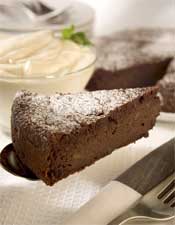Chestnuts
 The image of “Chestnuts roasting on an open fire…” pretty much sums up the best and cosiest of winter activities, especially the sociability of the festive season.
The image of “Chestnuts roasting on an open fire…” pretty much sums up the best and cosiest of winter activities, especially the sociability of the festive season.
Not to be confused with the unrelated and inedible horse chestnuts which grow prolifically in Ireland, the European sweet chestnut, Castanea sativa, is actually a cousin of the beech.
Despite their nut-like appearance and floury texture, chestnuts have a high water content and need to be treated as perishable fruits rather than hard nuts, ie kept cool in storage and used while quite fresh, before they lose too much moisture.
In Britain and Ireland chestnuts are associated particularly with the Christmas period and available for only a short time; once commonly roasted in the streets (and not so long ago – I can remember them for sale in Grafton Street…), roasting is still the best-known cooking method in these islands.
The skin is scored beforehand to prevent an explosion when the contents expand in heat; when cooked and cool enough to handle, the skin and inner husk is peeled away to reveal nutritious nutty flesh, which has a deliciously delicate, sweet flavour and is gluten- and cholesterol-free. More surprisingly, and unlike other nuts, chestnuts are quite high in vitamin C, especially when dried.
Chestnuts are an extremely versatile food and although in continental Europe, where they are widely available, they had fallen from favour to some extent in recent decades (possibly because of a past association with poverty), they are now making a comeback along with renewed interest in traditional cooking and natural foods.
They can be bought fresh, dried, ground, vacuum packed and canned (both whole and as a sweetened or natural purée); in Ireland, fresh chestnuts are available in autumn and canned ones (eg Clément Faugier or Epicure) all year; dried and ground product can also be found in some specialist food shops.
The uses of chestnuts in both sweet and savoury dishes are very varied and include many dishes made with chestnut flour, as well as stuffings made with chopped nuts (traditional for goose and turkey), whole chestnuts used to enliven vegetables dishes (eg Brussels sprouts) and, of course, the wonderful Christmas treat of marrons glacé – which dates back to the 16th century and takes many months to produce, using a candying method which is still very labour intensive.
Another old favourite is mont blanc, an irresistible dessert popular in France where (although it can of course be made from fresh chestnuts) it often consists only of canned sweetened chestnut purée and chilled crème fraîche - yet it is impossibly delicious.
 Chestnut and chocolate cake
Chestnut and chocolate cake
A rich, moist chocolate dessert cake – this could be the perfect alternative to Christmas Pudding for those who dislike dried fruit.
Click for recipe






There are currently no comments
Leave a comment
Not a member? Register for your free membership now!
Or leave a comment by logging in with: